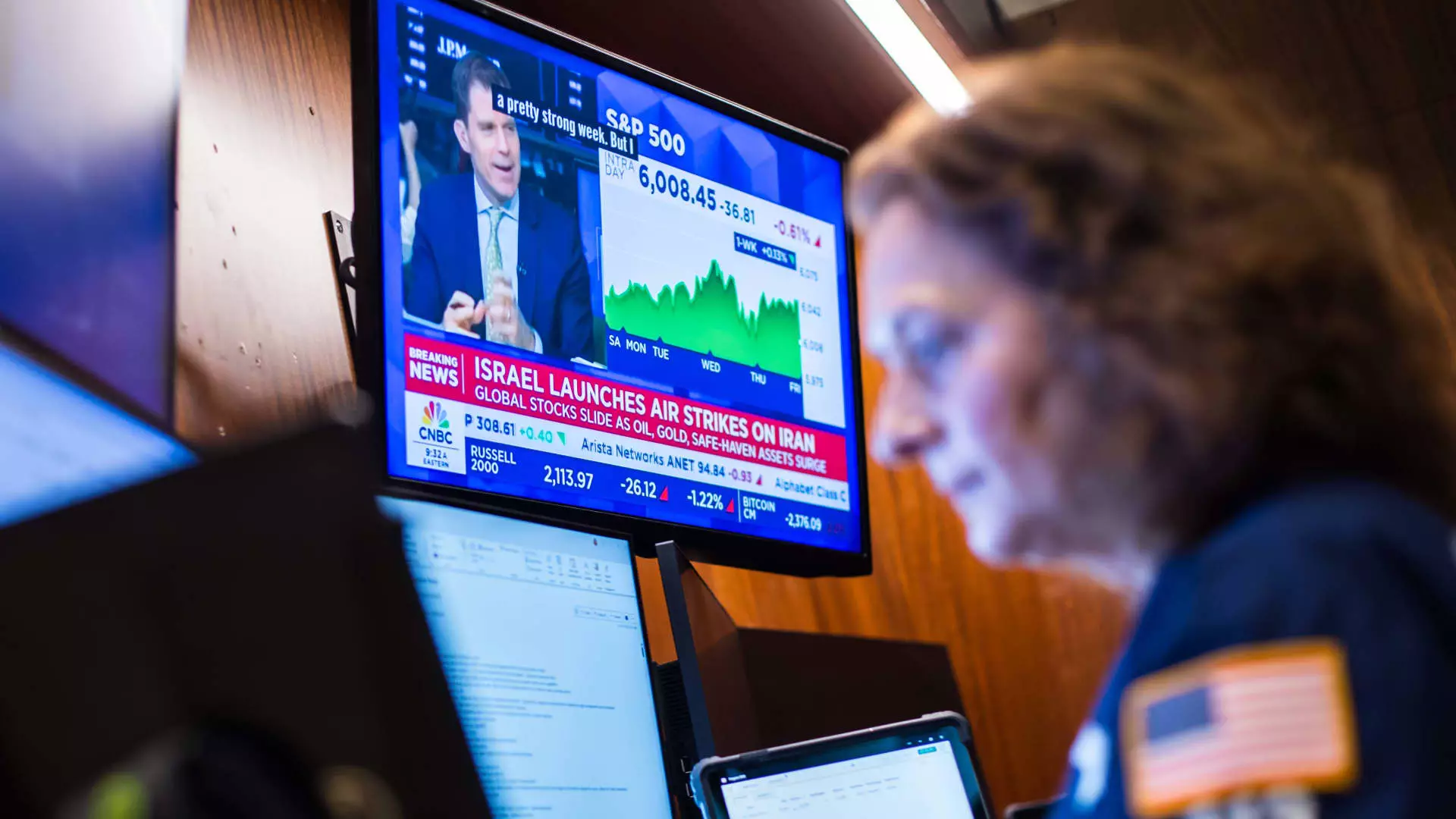Last Friday unleashed a wave of chaos in the financial markets as Israel launched a striking offensive on Iranian nuclear facilities. The tension escalated quickly, sending tremors through global markets, particularly in the United States. The S&P 500 and Nasdaq Composite indices experienced notable declines, losing approximately 1.13% and 1.3%, respectively, as investors reacted to the heightened geopolitical risks. Before this incident sparked widespread panic, markets seemed poised for a favorable week. In stark contrast to the previous trends, these indices slipped into the red, marking an abrupt end to what had been a promising streak of gains.
In addition to the plummet in stock valuations, commodities responded fervently to the news. Brent crude and West Texas Intermediate crude futures surged by about 7% and 7.5%, respectively. It’s almost ironic that as a conflict erupts, crude oil—typically a harbinger of economic durability in adversity—drew renewed attention, providing a stark reminder of the intertwining relationship between geopolitical tensions and oil markets. Simultaneously, gold climbed, reaching a two-month high as investors sought refuge in safe-haven assets amid rising turmoil. Against this backdrop, the U.S. dollar index faltered, further complicating the dynamics for long-term investors who should be reconsidering their strategies in light of an unexpected downturn.
Meanwhile, the U.S. and China reached an agreement focusing on a framework for trade discussions, particularly regarding rare-earth minerals. Although this news should ideally boost investor sentiment, it often feels like trying to place a Band-Aid on a festering wound—momentary solace rather than substantial healing.
Economic Optimism Amidst Uncertainty
Despite geopolitical upheaval, a glimmer of optimism emerged from economic indicators released early in the week. Data showed improvement in inflation metrics, specifically revealing that the consumer price index rose at a slower pace than anticipated. The producer price index also delivered encouraging results, indicating a significant drop in wholesale inflation. These numbers promote a narrative suggesting that consumers may soon regain some buying power, though the definition of “good news” feels rather skewed amidst prevailing uncertainties.
Nevertheless, a softening labor market continues to raise eyebrows. While jobless claims remained steady, they sit at unnervingly high levels. Hence, the question lingers: Is this cautious optimism truly warranted? Or is it merely a facade behind which economic pitfalls are lurking? We are witnessing an environment where economic indicators appear favorable, yet the reality for American workers tells a more nuanced story. Stable job numbers may conceal the fact that many are stuck in jobs that barely meet their living costs. As a result, one may argue the notion of recovery remains elusive.
The AI Arms Race: Boon or Bust?
As we observed throughout the week, the race for advancements in artificial intelligence (AI) showcased significant traction within tech companies, reflecting an ever-growing divergence between progress and hype. On one hand, Apple’s annual Worldwide Developers Conference drew muted expectations. Despite the buzz surrounding AI, an apparent lack of substantial updates left investors feeling underwhelmed. Compare this to Meta Platforms, which skillfully ignited interest by securing a hefty investment in Scale AI, aiming to spearhead their initiative for generating artificial general intelligence.
In an age where AI’s potential feels boundless yet convoluted, Nvidia’s CEO reiterated the expanding demand for computing capabilities. While forecasting a tenfold increase in compute capacity across Europe, one wonders if such a leap is sustainable. The pursuit for superior technology comes with a cost, creating an environment where companies are fighting to dominate the market. Advanced Micro Devices (AMD) made headlines with their new AI server chip announcement, and while this may seem promising, its launch is not anticipated until 2026. Shouldn’t we be more discerning about celebrating innovations that are years away?
Furthermore, Oracle’s impressive quarterly results juxtaposed against a tumultuous market offers an intriguing narrative. As Oracle elevates its cloud infrastructure to meet the AI demand, the company is undoubtedly tapping into a thriving market. Yet, is this diversification enough to respond effectively to fluctuating demands in a capital-intensive environment? One must examine if the quest for AI supremacy could inadvertently lead to a bubble burst.
The amalgamation of geopolitical tension, economic unpredictability, and relentless technological advancements creates a market landscape that feels paradoxically exhilarating yet unnerving. In striving for progress—whether economically or technologically—one must not lose sight of the foundational aspects that underpin sustainability and stability in the marketplace. As investors brace for the unknown, the journey ahead remains fraught with challenges and opportunities alike.

